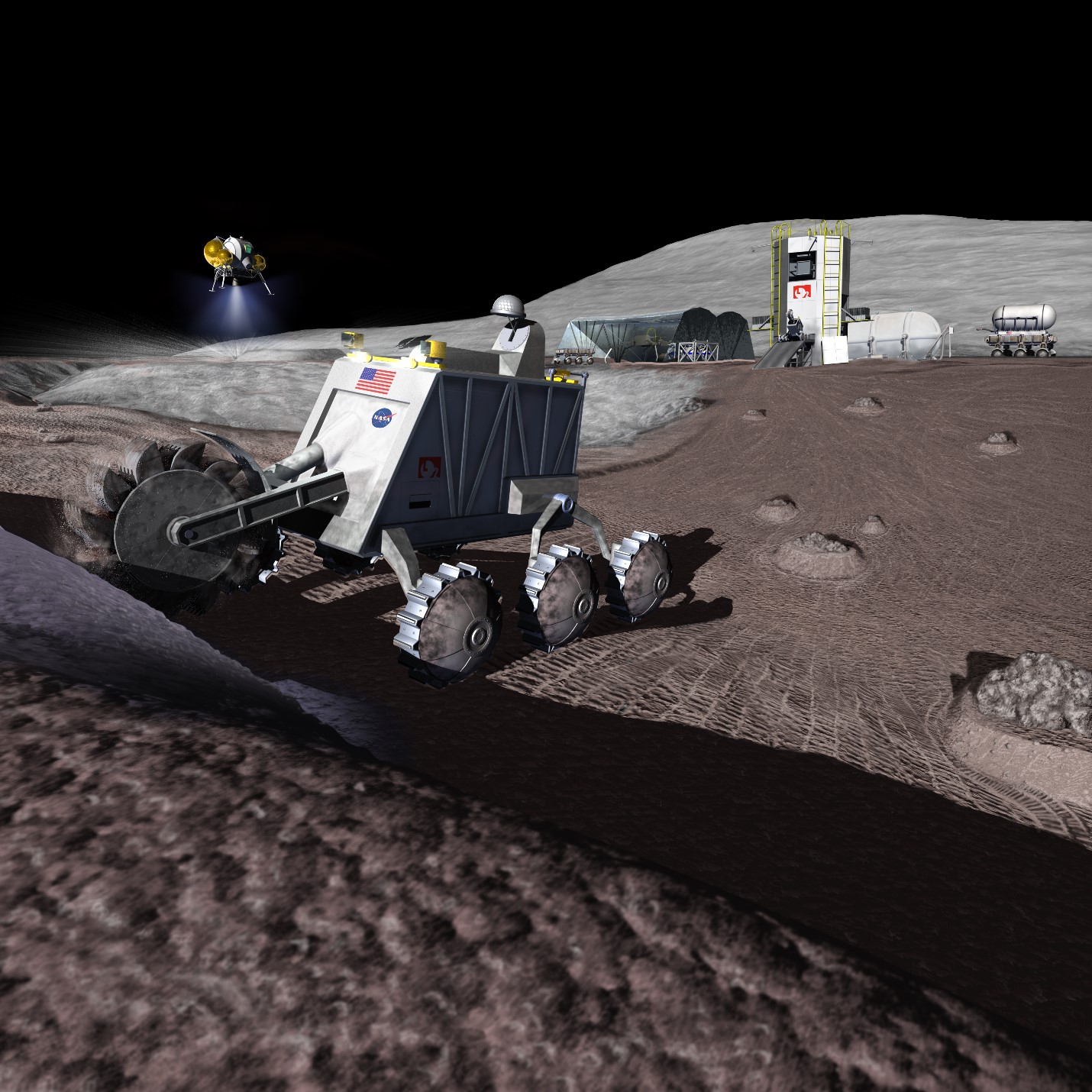
Space resources
Studies have shown that the cost of space exploration can be dramatically reduced if we rely upon resources that are already in space, rather than launching everything we need from Earth. In fact, some studies have suggested that the cost of doing Mars missions might be reduced by a factor of 3 to 5. Space resources include the oxygen that is bound up in all the minerals in the Moon, asteroids, or Mars. Oxygen is the heaviest but always necessary rocket propellant. Another vital resource is water, which can be found in the poles of the Moon, in certain types of asteroids, and in various deposits on Mars. To use these resources, we must have an excellent understanding of their geology and physics, which means we need to develop instruments and missions to explore and prospect. We must also develop technologies that will do the mining, beneficiating, and processing of the resources. Examples include robots that will scoop icy soil on the Moon, or machines that thermally extract the water and organic volatiles from the clay minerals of carbonaceous asteroids.
FSI and CLASS have world-class expertise in these areas. We have NASA contractsto develop simulated asteroid regolith and to develop small spacecraft that mine water and hop on steam propulsion. We have completed NASA contracts to study 3D printing with Martian clay. We participate in the annual NASA Robotic Mining Competition, supplying one of the judges for the competition and sponsoring the Granular Mechanics Innovation Award. Our faculty have performed many hundreds of reduced gravity parabolas on NASA aircraft studying the behavior of lunar and martian regolith. Our team works with several of the asteroid and lunar mining companies through subcontracts, serving on their advisory boards, and collaborating on R&D projects.
Surface materials are the repository of fundamental information on the origin, impact history, geology, mineralogy, resource potential, and geochemical evolution of their parent bodies. These same properties also directly affect designs for exploration hardware, the parameters of mission planning, and may provide insight into potential hazards for human and robotic explorers.
Before humans voyage to asteroids, back to the Moon, or to the moons of Mars, NASA will need an informed and comprehensive science approach to robotic investigation of the unique and complex environments of these exploration targets that will support exploration objectives. A key challenge is to understand the various processes that create, evolve, and shape the surfaces of exploration targets. CLASS attacks this problem by matching the wide range of processes with the same wide range of disciplines, with the goal of enabling safe and effective exploration activities.
Researchers: Phil Metzger, Zoe Landsman, Dan Britt, Addie Dove, Chris Bennett
